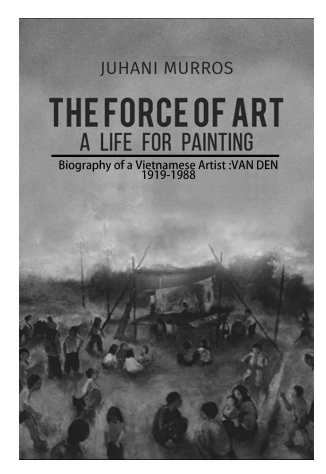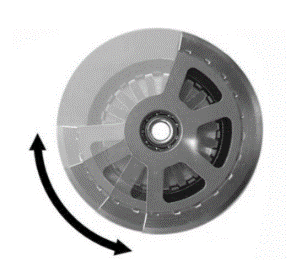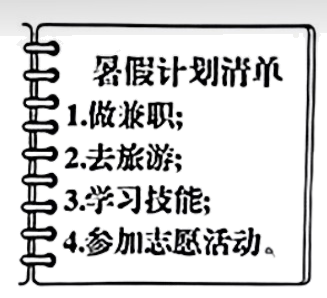MUSICAL HERITAGES FROM ANCIENT CHINA
Since remote antiquity, Chinese people have used music to record their lives and describe the ideals in their hearts. Catchy tunes are not only played on precious instruments, but also visualized in carvings, paintings, and buildings. Feel free to explore here!
Han Dynasty (202 BC-AD 220)
This period marked the significant development of the manufacturing of gugin and its music. The example unearthed from the Mawangdui Han Dynasty Tomb in Changsha, Hunan province, proves that gugin had developed into the form known today during that period. It shows 7 strings and 13 markers indicating the pressing positions of overtone series.
Northern Wei Dynasty (386-534)
Buddhism and its musical culture spread extensively during this period. Buddhist temples provided places for musical activities, which were recorded in. many of the-existing stone carvings. Located in Gongyi, Henan province, the Grotlo Temple is-famous for its reliefs representing musical events. They are precious historical materials reflecting the music characteristics of the dynasty.
Song Dynasty (960-1279)
With economic development, a variety of musical cultures emerged to meet the entertainment needs of different social classes. Part of the painting Life along the Bian River al the Pure Brightness Festival vividly reveals a storytelling performance. The painter adopted delicate techniques to truly record a street performer, whose superb skills are reflected by each listener's show of appreciation.
Ming Dynasty (1368-1644)
At this time, traditional Chinese operas developed rapidly, promoting the formation of many singing styles. People began to enjoy operas and drama stages were built. Covering a construction area of more than 160 square meters, the Fancun village drama stage in Shanxi province provides rich materials for the study of the local folk culture.

"By removing needless details in pursuit of perfection, Van Den followed in the footsteps of many great artists, writers, composers, and painters."
Juhani Murros made an unexpected discovery during his visits to art galleries when he worked for an organization in Ho Chi Minh City in 1990. A small still life in an unnoticeable gallery commanded the Finnish physician's attention. "It was not an eye-catching oil painting, yet its dark, mysterious colors and the emotional tension of its disciplined composition set it apart." Thus began a long journey of discovering the art and life of Van Den, a Buddhist of mixed Chinese and Vietnamese ancestry who studied in Paris for less than two years during the first French Indochina War.
Murros' biography is, by necessity, brief because there is limited knowledge of the artist, mostly in oral way by family and friends. Many of his paintings did not survive the damp Southeast Asian climate nor the political chaos of his lifetime. However, the author's research appears to be extensive, as much a years-long spiritual examination of Van Den as a historical one. The artist's love for country life is apparent in his work, and it is said by those who knew him that he preferred to paint countryside scenes close to his heart and worked as an outsider. He is uninterested in the more elegant work of academically recognized painters. Despite these limitations, Van Den won Vietnam's most honorable art award in 1960.
Murros gives an in-depth look into the life of this little-known unsung master. The book introduces the readers to Van Den's art with photographs of his paintings, accompanied by short stories behind them. The book is as quiet as the artist's work, but it is a satisfying read. Each stroke of words in the book connects to the readers; the narrative awakens the artistic spirit in each one of us, encouraging us to follow our heart.

To study the behavior of wild animals, scientists routinely tag them with GPS location trackers. But such devices' battery capacity limits how long they operate, often bringing an early end to significant conservation work. Solar-powered trackers are also a poor choice for they break easily and don't work for night creatures.
So biologist Rasmus W. H. of the University of Copenhagen and his colleagues turned to another abundant power source. After some trial and error, they finally came up with a tiny generator powered by a pendulum (摆锤) inside a closed device. As the tagged animal moves, the swinging pendulum forces a ring to slide across a copper coil, generating current which is then used to power the sensors for GPS unit. The tracker, which could theoretically survive for the entire life span of an active animal, was recently tested on domestic dogs, a wild pony and a European bison. The dogs and bison in the study were active enough to create the energy for one GPS transmission cycle per day for 14 days and 17 days, respectively. One of the wild pony's-trackers lasted at least 146 days but didn't produce enough power for daily transmissions, the researchers reported in Plos One.
The limited power generated by the animals' movements means the new tracker isn't ready for prime time just yet, says ecologist Emily Studd of British Columbia's Thompson Rivers University, who wasn't involved in the study. When researchers want to keep close track of animals, they often need GPS fixes more than once a day. But Studd says that with a bit more development, this could be a game changer for wild-life animal research and monitoring.
Rasmus and his colleagues hope conservation workers can one day use this technology to track species such as tigers, leopards and wolves, which can easily destroy solar-powered trackers and which hunt and travel at night.
The year is 1763, and a 7-year-old Mozart is about to set off on a tour around Europe that will jump-start the Mozart legend. Mozart had a trick up his sleeve. When the young Mozart heard a note played-any note-he could immediately identify exactly which note it was. It was an ability now we know as "perfect pitch", and it seemed to be an example of the mysterious gifts that young geniuses had been born with. But is that really so?
Over my years of studying experts in various fields, like Mozart, I have found that there's no such thing as a predefined ability. Actually, those people all develop their abilities through "deliberate practice", a purposeful and systematic type of practice that makes it possible for them to do things they otherwise could not. In them, potential is an expandable vessel, shaped by the various things they do throughout their lives.
One of my testimonies came from Ray Allen, a ten-time All-Star in the NBA. Allen's jump shot was not noticeably better than his teammates' back in high school; in fact, it was poor. But with hard work and dedication, he transformed his jump shot into one so graceful and natural that people assumed he was born with it.
But it doesn't mean "Just keep working at it, and you'll get there". Heartfelt desire and hard work alone will not lead to improved performance. The right sort of practice carried out over a sufficient period of time will lead to improvement. Nothing else. And this is true whether our goal is to become a concert pianist or just play the piano well enough to amuse ourselves, to be the greatest three-point shooter or just build ourselves up. Deliberate practice is the gold standard for anyone in any field who wishes to build new skills and abilities.
Almost everyone has felt something similar: wearing clothes we don't like causes a general feeling of unease and discontent. This proves the fact that clothes have more than functions of protection or warmth in life. As former fashion editor Caryn Franklin writes, "Fashion offers a dialogue rich with social and political meaning for those who want to unlock the language of clothes."
We like or dislike certain colors because of the attributes or moods we associate with them. Those associations might be cultural. White, for example, is commonly associated with purity and innocence in Western cultures, whereas in China, people associate it with death and mourning.
The book The Little Prince offers a fictional example of the latter: The fox will love the sight of wheat, which had been meaningless to him, just because it will remind him of the color of the boy's hair.
As a result, associations can differ widely from person to person and culture to culture. Others might read into our outfits something different than we intend. But as long as we are not wearing our clothes specifically to communicate certain qualities to others in a specific context (such as professionalism at a job interview), what others think of our clothes should be less important than what we think of them and why we choose to wear them.
A. Take colors, for instance.
B. We ought to dress to benefit ourselves, not others.
C. They also communicate something about the wearer.
D. Thus, they will misunderstand our values and identity.
E. Clothes have the psychological power to elevate our sense of self.
F. Or we can form associations based on our personal experience and values.
G. We might also associate certain fabrics with different qualities of character.
It was like finding a needle in a haystack. Shelly Romo surveyed what was 1 of her home in Maui, which was hit by a deadly wildfire, hoping to find her wedding ring, expecting to leave 2 . But luckily, after three hours' 3 with volunteers, it finally appeared, the diamond 4 but the band completely damaged. Romo and her husband went straight to No Ka' Oi Jewelers — a local business that has been 5 fire-damaged jewelry free of charge.
No Ka' Oi owner Omi Chamdi said he was one of the 6 ones — the fires had avoided his home and storefront. That's why, in its aftermath, he immediately sprang into action and advertised 7 restorations. "When the fires here on Maui occurred, pretty 8 I decided this is something I can do and I really want to do for the 9 community."
However, Chamdi doesn't restore the jewelry himself; 10 he has been paying for the restoration services. When asked if he ever 11 that, he shook his head. "These are not just ordinary items, these are the most 12 possessions that people go back and dig through the 13 to find."
14 , Romo was not ready to say goodbye when the fires destroyed her home. But finding her wedding ring and getting it restored gave Romo some peace about 15 .
Dunhuang, located in Northwest Chinn's Gunau province, was important stop on the ancient Silk Road. Then, what does it look like today?
From December 5 to 8, a micro-variety show, titled "The Dunhuang You Don't Know", (release) on social media platforms. Since then, the video aeries has accumulated millions of views online.
Chinese people are familiar with Dunhuang's magnificent beauty, from the renowned Mogao Grottoes housing rich collections of Buddhis artwork the Crescent Spring (月牙泉), a crescent-shaped lake (surround) by giant sand hills. Yet, the micro series takes the audience on a journey (discover) the uncovered, vivid and vibrant modern lives of Dunhuang. They are displayed from eight dimensions, (include) local cuisine, folk heritage and the guochao, means "native wave" and the use of traditional Chinese elements in fashion.
In recent years, with the rise in (popular) of the guochao trends, contemporary artists have transformed Dunhuang's age-old art into more creative cultural (product) that appeal to young consumers. In this video series, the distinctive Dunhuang aesthetics (美学) have also (skillful) captured people's attention through cosmetics, fashion and trendy collectibles.
1. 从右图中选择一项心仪的计划并说明理由;

2. 词数80左右。
My Summer Vacation Plan
I stared at myself in the mirror: blue tights, yellow vest, an aquamarine fish tail trailing behind me, and large googly eyes (sitting atop my head. I raised my eyebrows quizzically at my mom with uncertainty about this costume. Mom ensured that she followed the pattern exactly. "Maybe the makeup will add something," Mom said hopefully. I sighed and looked back at the mirror. Somehow Mom had convinced me to do a play this summer. So here I was about to play the Fish Footman (鱼仆人) in the local community theater production of Alice in Wonderland. I can't say it's been the time of my life. Actually, I even wanted to withdraw from the play.
"Well, there's no turning back now," she said. "You've been rehearsing (彩排) for two months. I couldn't be prouder-of you." She gave me an encouraging anile, pulling me in for a fierce hug. I had to admit: Mom's hugs are the best. But despite that, I felt u knot in the pit of my stomach that got worse as the hour of opening night drew nearer.
That day I followed Mom to the backstage of the theater, wearing the questionable costume. I shrank inside myself, but Mom pulled me toward the makeup table. When my makeup artist had set down her last makeup brush and Mom led me over to a mirror, my jaw dropped. A mass of blue spread from my forehead down my nose, and lime green circles bubbled over my cheeks.
"Mom! I can't go out on stage like this!" I cried. "I'd be a laughing stock!"
"Riley! This is Alice in Wonderland. You're not the only one in an odd costume. I'm going to watch you go out on that stage tonight. She turned away to leave, but then leaned down and kissed me on the forehead." I love you, honey. And she went away.
Tears filled my eyes as chaos closed in around me. It felt like I stood there alone for hours, but in reality it was more like ten minutes before the assistant stage manager came in and called my name.
注意:
1. 续写词数应为150左右;
2. 请按如下格式在答题卡的相应位置作答。
My scene was coming up.
Applause flowed through the audience.